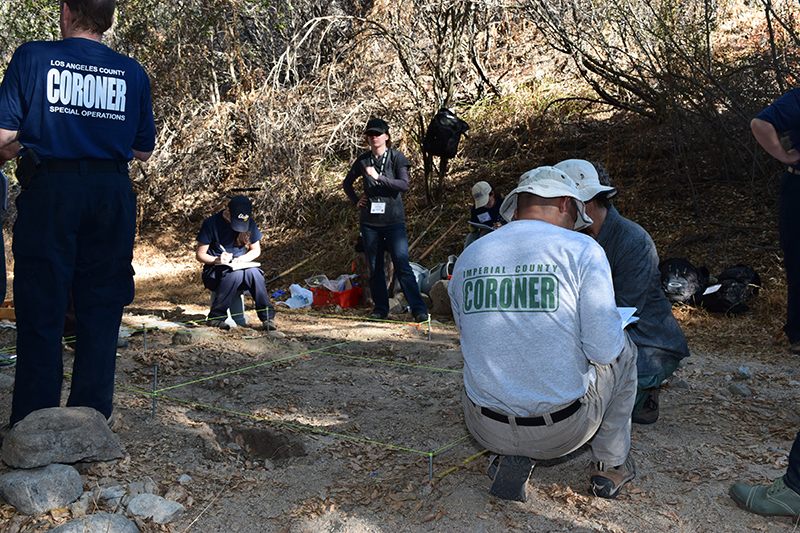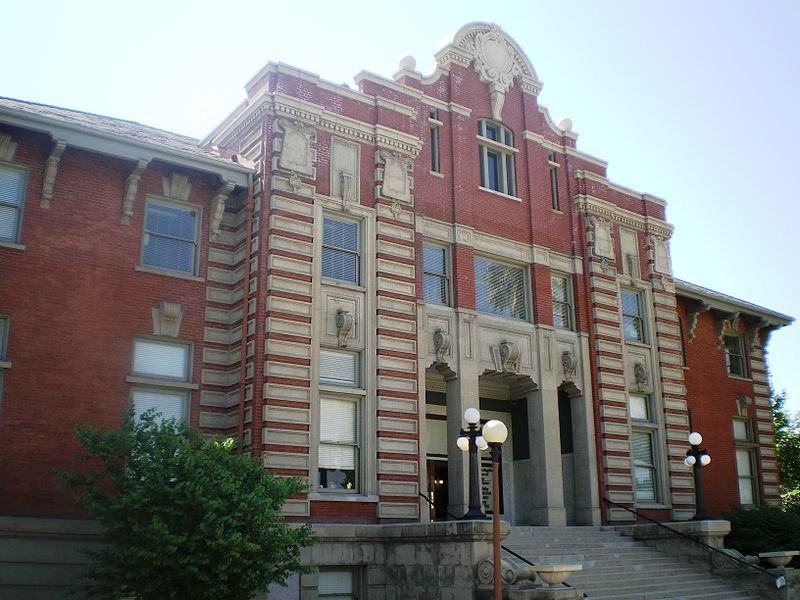Why Forensic Anthropologists Want to Bury Bodies Around L.A.
There is a scientific explanation for this.

Southern California landscape. A Forensic Anthropological Research Facility, or “Body Farm,” has been suggested for Los Angeles. (Photo: Karen/CC BY 2.0)
On March 11, L.A.’s County’s Chief Medical Examiner-Coroner Dr. Mark Fajardo resigned, citing department turmoil and severe understaffing as reasons for his departure. In an interview he explained that funding restrictions had resulted in a backlog of 180 bodies piled up in the county morgue.
A robust workforce of well-trained, highly skilled criminalists and physicians is paramount in maintaining high standards of timely post-mortem processing. The L.A. County Department of Medical Examiner-Coroner, which is legally mandated to determine the circumstance, manner, and cause of all violent, sudden, or unusual deaths, works with 52 law-enforcement agencies to process over 60,000 deaths per year.

The LA County Coroner oversees approx 4000 square miles of land. (Photo: Courtesy LA Country Department of Medical Examiner-Coroner)
The department has encountered trouble with such a high volume of cases, and not just in the recent past—audit reports dating to 2002 reveal internal fiscal irregularities, and in the bad old days of the 1970s and 1980s there were severe autopsy backlogs, insect infestations in the morgue and a double-billing scam.
What could help turn things around? One possible approach would be to acquire a bunch of bodies, bury them in a field, and then dig them up again—all in the name of science. In other words, L.A.’s Department of Medical Examiner-Coroner could benefit from a new Forensic Anthropological Research Facility: a “Body Farm.”
Cal State professor Dr. Donald Johnson is an expert on criminalistics whose research focuses on crime scene investigation, reconstruction (homicides and sexual assaults), and forensic biology. At a forensics workshop last year, Johnson stated that Los Angeles would benefit from its own Forensic Anthropological Research Facility (FARF) so that analysts could document with exactitude how bodies decompose under Southern California’s specific climatic conditions.

The Hertzberg-Davis Forensic Science Center at Cal State LA. (Photo: Cal State LA)
FARFs (or “Body Farms” as they are colloquially termed after the success of Patricia Cornwell’s 1994 namesake novel) allow practitioners to better understand the human decomposition process in relation to environmental variables. At present there are six operational facilities around the U.S., relying on both human and pig corpses for data collection.
The first body farm was established at the University of Tennessee, Knoxville in 1987, followed by similar projects at Western Carolina University (2006), Texas State University (2008), Sam Houston State University (2010), Southern Illinois University, Carbondale (2012), and Colorado Mesa University (2013).
While the general biological breakdown of human matter is universal, the rate of decomposition can be significantly affected by factors such as temperature, humidity, sepsis, trauma, clothing, water exposure/dehydration, submersion, insects, scavengers, carnivores and rodents. Active research on FARFs across the U.S is vital, contributing to the development of new techniques of cadaver information retrieval, which are in turn implemented by law enforcement. The ability to accurately define the post-mortem interval (PMI), for example—the time that has elapsed since a person died—can enable medico-legal agencies to narrow a suspect pool.
At a time when forensic evidence in the courtroom weighs heavily on the outcome of a case, the legitimacy of data and dexterity with which law enforcement employs it is paramount. Body farm research, then, is a valuable intermediary between forensic anthropology studies and law enforcement application, providing protocol for the standardization of supporting data to assist in live casework.

Personnel from the LA County Coroner instruct students during the 2014 Skeletal Recovery Workshop. (Photo: Courtesy LA Country Department of Medical Examiner-Coroner)
At a meeting of the L.A. County Commission on Local Government Services in 2014, Special Operations Coroner Lieutenant Elissa Fleak noted in a presentation that the region has seven unique microclimates: Coastal, Inland Coastal, Valley, Scrub Forest, Mountain, High Desert, and Low Desert. Given the largely unstudied soil content of the region, there is tremendous forensic research benefit to establishing a local body farm facility, with a proposed focus on cadaver identification processes and wound pattern/tool mark analysis.
A local facility would also enable the L.A ME-C to provide state-certified training in grave location, grave excavation, and skeletal recovery of human remains. (Indiana Bones, L.A. county’s cadaver dog is the primary “tool” at present).
Were L.A. to move forward with plans for such a facility, the next steps would be to secure land, implement a body donation program, and to propose, review and approve satisfactory research projects and parameters. The procurement of land is controversial; few people are comfortable with the aesthetics or odors of death, especially from their kitchen window.

Los Angeles County Coroner Building. (Photo: Cbl62/CC BY-SA 3.0)
On a practical level, soil drainage, water contamination, and attraction of wildlife are important considerations. Developing a body-donation program is less onerous—Knoxville’s facility has over 2,000 pre-donors on file—and with a contemporary emphasis on sustainable living,ecologically friendly, scientifically advantageous post-mortem practices are on the increase, with people turning away from conventional (and toxic) funerary practices.
So with no local body farm yet what are the options for Southern Californian residents who want to put their body to use after death? Since California has no truly green “conservation” burial grounds (land parcels large enough to be considered a valid and enduring conservation effort), the non-profit Funerary Consumer Alliance of Southern California (FCASC) has put together a list of the five “next-best” choices for a green burial. One of the options is to have your body shipped to the original Forensic Farm in Knoxville, where it can be placed in a shallow grave, then dug up by bright-eyed forensic anthropology students.












Follow us on Twitter to get the latest on the world's hidden wonders.
Like us on Facebook to get the latest on the world's hidden wonders.
Follow us on Twitter Like us on Facebook